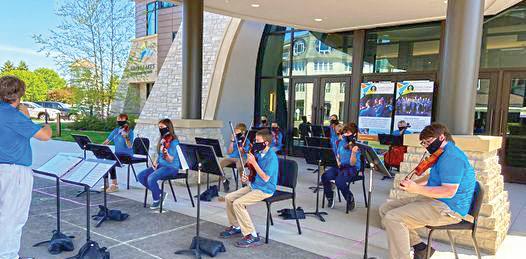THE NORTH’S WORKFORCE HOUSING CRISIS JUST GOT WORSE. Post-pandemic demand for employees is high. But the supply of affordable housing is low — and the rate of new units being developed for long-term rentals is nowhere near the necessary target.
By Craig Manning Is the ideal of “affordable housing” even possible to achieve in northern Michigan? It’s a question that workers, employers, and housing advocates in the region have been asking for years — and in the wake of a game-changing 2020, seem increasingly farther from an optimistic answer. COVID-19 sparked a massive adoption of remote work and unshackled millions of Americans from their workplaces. Ever since, there has been much talk of a nationwide “urban exodus.” According to Bloomberg, for instance, since the start of the pandemic, 100 people have moved out of the New York metropolitan area for every 84 who moved in. Areas like northern Michigan, meanwhile, have seen a boost, with unprecedented real estate sales figures indicating the area’s growing popularity. The Northwest Michigan Division of Real Estate One closed a record-breaking $560 million of real estate in 2020 — an increase in some $65 million (11.6 percent) compared to the year before. Dennis Pearsall, the division’s president, credits the spike in large part to people relocating to the region due to COVID-19. HIGH DEMAND, LOW SUPPLY Even before the pandemic, there was evidence that northern Michigan already had an insufficient inventory of housing units available to satisfy the demand of people who either want to live in the region or already do. In 2019, Housing North (a regional housing advocacy organization) and Networks Northwest (a local economic development agency) conducted a study of the housing market across the 10-county region the two organizations serve.
The study concluded that its 10-county northwest Lower Michigan region could support roughly 15,000 new housing units through 2025, including 10,880 rental units and 4,660 ownership units. The bad news: In the wake of the pandemic and the changes it has wrought in the local market, true levels of need could outstrip even those projections. The even worse news? At the moment, northern Michigan isn’t even coming close to the numbers it would need to hit each year in order to reach that 15,000 number by 2025. According to Yarrow Brown, executive director for Housing North, statistics from recent years show that the area is adding approximately 1,000 new units per year — well short of the 3,000-plus it would need to keep up with demand. Low supply and high demand of local real estate are doing what the laws of economics dictate it always will: raising prices. Houses in prime markets, especially Traverse City and most of Leelanau Peninsula, are getting multiple offers at or above the asking price within hours of hitting the market. The pricing jump is buoyed by historic low interest rates, which have put buyers in a position where they can afford more expensive homes without pricing themselves into unmanageable monthly mortgage bills. THE AIRBNB FACTOR The other complicating factor is the region’s short-term rental market. Debate about vacation rentals in northern Michigan cooled somewhat during the pandemic, in part because that industry as a whole took a big hit last year; Airbnb’s revenues for the first nine months of 2020 were down $1.2 billion from the same time in 2019. Despite the worldwide dip in vacation rental activity, though, Brown tells Northern Express that short-term rentals have only
10 • may 17, 2021 • Northern Express Weekly
* All graphs and stats provided by Housing North
continued to grow in the local region. Northwest lower Michigan, despite being home to just three percent of the state’s population, encompasses a quarter of the state’s short-term rental listings. Those listings saw a 233 percent increase from 2016 to 2018, and have continued to spike since the start of the pandemic — charting approximately 180 percent growth in the past year, according to Brown. While Brown is quick to note that Housing North is “not against short-term rentals” and understands their importance to the local tourism economy, she says the “balance” of housing in the area is tilting too far in the direction of travelers or parttime residents, and not far enough in the direction of people who live and work here year-round. Last year, Housing North piloted a program with Charlevoix aimed at
addressing the short-term rental problem. The initiative, a “Deed Restriction Program,” offers cash incentives to any “current or prospective property owner” in Charlevoix “in exchange for an agreement to always require the housing unit to be inhabited by year-round residents.” Brown says other communities in the region are looking at the program and thinking about launching something similar. HELP HEADED ELSEWHERE In the meantime, local employers are feeling the strain from the local housing issue. Gary Jonas, who co-owns both The Little Fleet and Farm Club, says the latter business has had “five or six really good potential employees” who wanted to move up to northern Michigan from Detroit and other downstate areas. “But they can’t find housing,” Jonas said.






